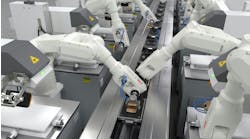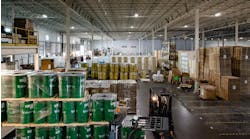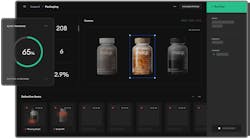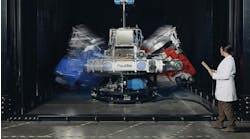The future of logistics over the next decade is more like holding a crystal ball than any other industry at this point. If you have a crystal ball in your home, it needs to stay covered when not in use. That’s not due to spirits or other concerns but because these act as high-intensity lenses that can focus sunlight into a beam that will quickly spark a fire.
In the same way, logistics decisions have often been gut reactions in past decades, but the future requires a deeper understanding of why things work. To help keep your logistics house from burning down, let’s look at a few drivers that will shape the industry over the next decade.
Long-Term Diversification Planning
Logistics has been beating the diversification drum loudly for a few years now. The prior focus was on backup and redundancies, often in the last mile. Carrier selection, distribution partners, and multiple warehouses have helped decrease costs even during uncertain or tumultuous freight rates.
As 2022 ends, companies are expanding that diversity deeper into their supply chains. The COVID-19 pandemic started conversations around re-shoring and near-shoring, but those are long processes. Plus, there hasn’t been much certainty in any region’s ability to protect operations and staff. The next decade will see some of this uncertainty even out while new production regions rise.
What logistics professionals should expect is for supply chains to build multiple redundancies and eliminate as many single points of failure as possible. The change will be how far this reaches upstream and downstream. Two parts suppliers that depend on the same mine for raw materials don’t mitigate that single risk of bringing down a manufacturing line, for example.
As economies emerge from the pandemic and investment in things like semiconductor chip production and lithium battery manufacturing get underway, logistics professionals will start looking for safer, stronger supply chain options. Service and material providers will start competing against companies near and far based on their capabilities and the strength of their supply chain redundancies.
AI as a Helper, Not a Replacement
The advent of artificial intelligence in logistics came with many worries that AI would replace people and positions. Many expected machines to become the best pickers and truck drivers and always select the best carrier for any given order. We worried that machines would kick humans out the front door.
Instead, we’ll likely see logistics companies follow models like grocery and convenience stores. When it speeds up decisions, improves sales times or enhances the customer experience, automation will take over. And oftentimes, it’ll require inputs from customers instead of the service provider—just like those self-checkout lines.
And, also like self-checkout options, there will be people waiting in the wings to address issues and ensure a good customer experience. In logistics, this means regularly reviewing selections to manage the cost and speed of services, verifying safety in transit, and any element that could impact cost or capabilities.
Yes, AI and robotics could completely replace many human logistics systems through full automation. But those systems are hamstrung by an inability to respond to human needs. In the same light, entirely human operations will be much slower and perhaps more expensive than AI tools. The AI-assisted logistics professional is a happy medium that protects partners, operations, and some professionals.
Data Niceties Become Requirements
Many logistic service RFPs still treat data access and movement as a “nice to have” instead of a strict must-have requirement. That’s going to end, and probably soon. Companies need access to real-time data to make significant business decisions and adapt to dynamically shifting markets. We’ve seen many issues around relying on outdated information leading to retailers and others holding way too much inventory at the end of 2022.
Companies will continuously rethink the way they price services and goods. Understanding the shifting total cost of fulfillment and storage will position them better to respond to market pressures and protect operations. Real-time data, API access, customizable dashboards, and other integrations are needed for this now.
The trend we expect to continue, and speed up rapidly, is for IT elements to cycle from new and innovative to requirements in SLAs rapidly. The pressure that consumers are putting on their services will continue to bleed into the logistics sector. Every logistics company will also be an IT company in the next decade.
Wildcard: Only Accountability Counts
At the heart of all logistics, decisions are relationships between parties. You’ve got to trust everyone in your supply chain to keep products moving and the world turning. So, the final prediction for the future of logistics is that relationships will require new forms of accountability. Think of elements beyond the service-level agreement.
With everyone diversifying, competitive advantages for 3PLs and other supply chain partners will be their ability to deliver. Sustainability is a great example here. Consumers are now looking past a sustainability pledge for the brands they love and following up to see if green initiatives are valid. You may have seen this in recent news about significant issues with carbon offsets.
Expect businesses to start doing the same, especially in areas like greening the supply chain, where one company’s promise impacts every partner’s claims. The future will hold every company accountable.
Jake Rheude is the Vice President of Marketing for Red Stag Fulfillment, an eCommerce fulfillment warehouse that was born out of eCommerce. He has years of experience in e-commerce and business development. In his free time, Jake enjoys reading about business and sharing his own experience with others.











